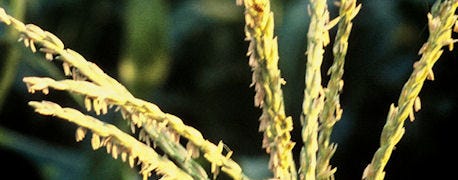August 2, 2013

Corn in the Dakotas will soon begin pollinating and it's a good idea to make some notes about the weather and other things during this period, says Adam Spelhaug, an agronomist with Peterson Farms Seed, Harwood, N.D.
"If your corn's kernel set is not ideal, you'll be able to use this information to zero in on the reasonable cause." he says.
He says to track the:

Corn tassels usually produce plenty of pollen. They shed 20,000-50,000 pollen grains per silk.
Temperature. Heat stress during pollination, meaning abnormally high temperatures of 95 degrees F and higher, can negatively affect silks and pollen grains. Silks can desiccate and become unable to receive pollen. This normally is masked if soil and plant moisture is adequate so it can be hard to determine if yield was reduced from heat or drought in many cases, Peterson says.
Starting with the late vegetative stages and continuing through pollination, drought has an increasing level of damage through each stage. In severe cases, corn yields can be reduced by 10% prior to tasseling. During tasseling, drought can affect yields by 10 to 25%. Drought stress during pollination can reduce yields 40 to 50%. Normally the plant needs to be fully stressed with extensive leaf rolling for at least four days to induce the higher end of yield-loss ranges.
Insects. Silk-feeding insects normally are not an issue, but with increasing levels of corn rootworm in the area, insects must be considered when discussing yield loss during pollination, Peterson says. Rootworm beetles will feed on pollen grains which can lead to clipped silks that will not pollinate. Kernels may be lost as a result of this feeding.
Cloudy skies. Long stretches of overcast skies can reduce photosynthesis, leading to abortion of recently fertilized ovules. Cloudy weather also can delay the onset of pollination.
"The pollination window can vary in the field but normally lasts for a week or more," Petersons says. "Peak pollen shed lasts about four days, with an individual plant able to release over 500,000 pollen grains per day during pollination. Lack of pollen normally is not an issue since plants will produce 20,000 to 50,000 pollen grains per silk. It is usually the timing of silk emergence during pollen shed that makes the difference.
For more information, contact Spelhaug at 866-481-7333 or [email protected].
You May Also Like




